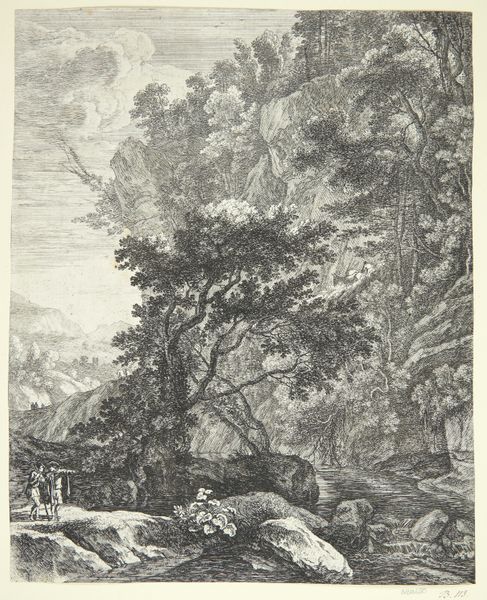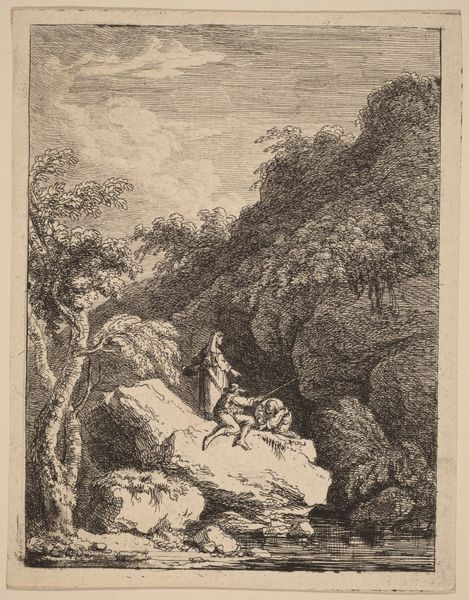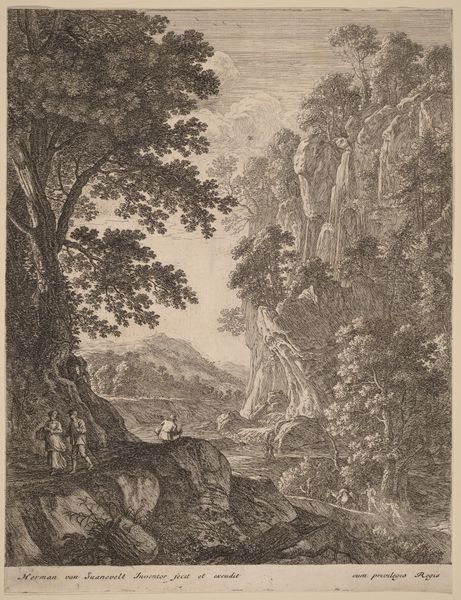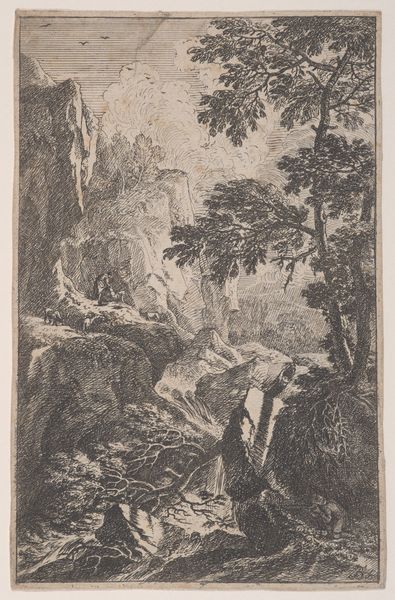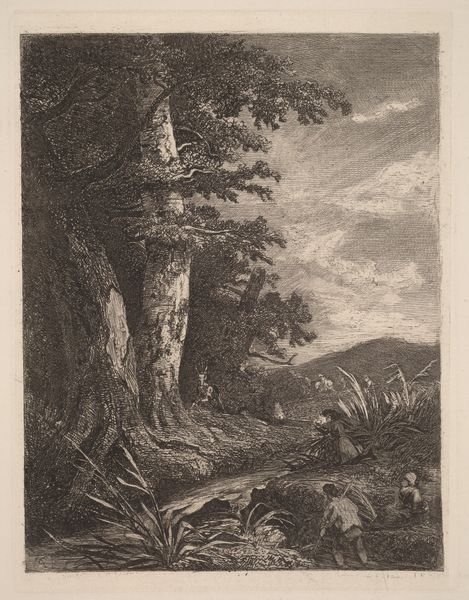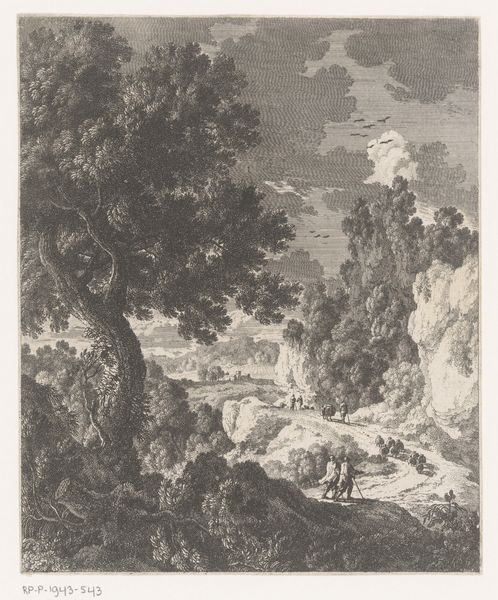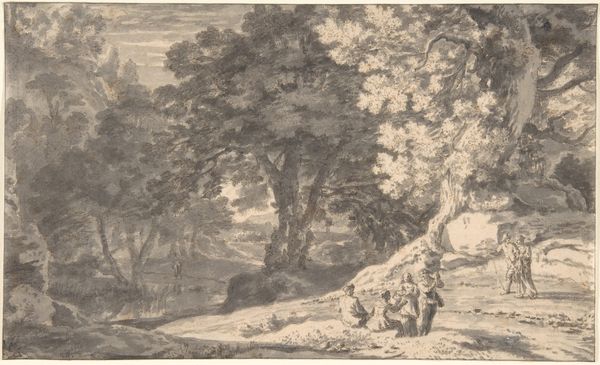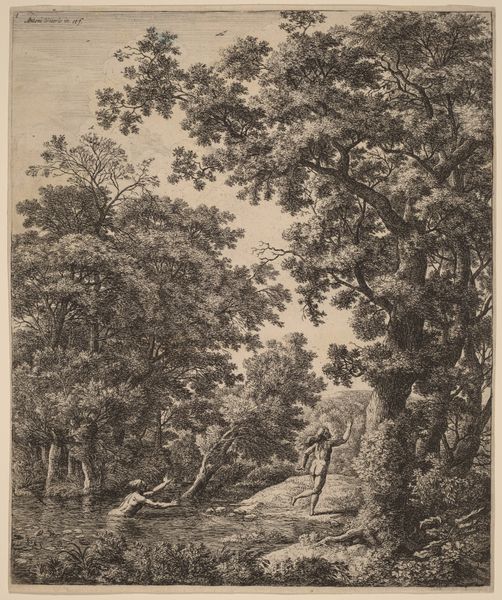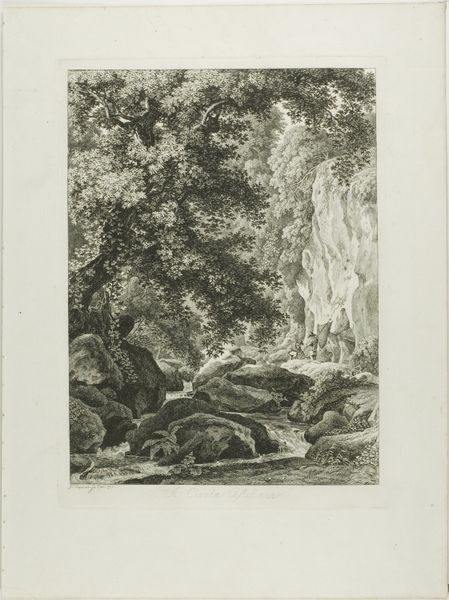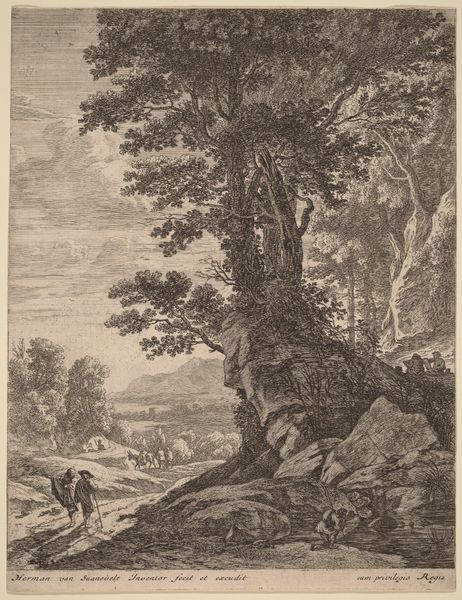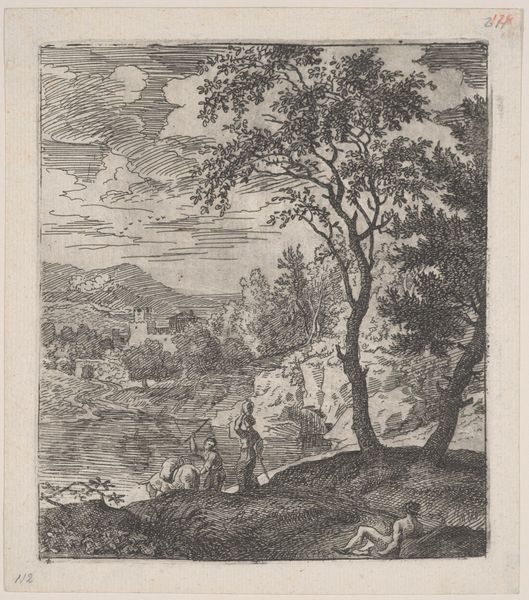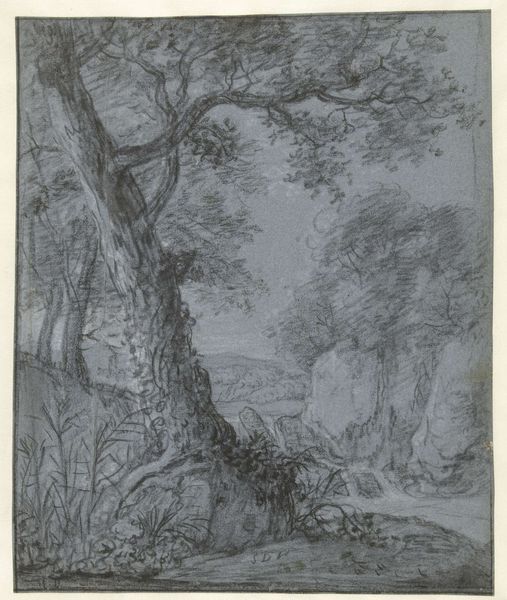
print, etching
#
baroque
# print
#
etching
#
landscape
Copyright: National Gallery of Art: CC0 1.0
Curator: Looking at "The Mountain" by Herman van Swanevelt, created as an etching print, my first impression is the sheer drama of the landscape. It's as if nature is putting on a grand theatrical performance. Editor: Drama, yes! A dark and moody production too, wouldn't you say? The tonal range created just through line work gives it an intensity, almost a sense of foreboding, that the typical pastoral scene lacks. It's not a gentle meadow; it’s a craggy, almost oppressive wilderness. Curator: That darkness is so central to Baroque sensibilities. While the landscape is indeed central, we should notice those two figures on the lower left. Their inclusion situates this etching within the conventions of landscape art popular at the time. Swanevelt isn't simply depicting the scenery; he's framing it for human engagement, hinting at our relationship with the natural world. Editor: Ah, yes, tiny humans in a HUGE world, right? But you know what's funny, even those tiny figures are pointing towards that castle in the distance, a symbol of civilization! Is Swanevelt playing with contrasts here? We get the romantic sublime in this "untamed" wilderness alongside, but just visible in the back, the control of humans to nature. Curator: Precisely! Etchings, and prints more broadly, played a crucial role in circulating ideas and representations of landscape. In this case Swanevelt translates Italian ideals for a wider audience. While a work like this looks simply aesthetic to the contemporary eye, it played a strong socio-political role during its day as Europeans began moving around. The expansion of these ideals also fueled colonization efforts, because now more folks saw themselves as explorers. Editor: Right! These "wild" landscapes that appear idyllic romantic became part of what these soon-to-be colonizers sought. As to our modern perspective, it’s easy to forget that this image, now viewed as "art", may have been a commodity used to sway minds, or to promote ideas. The technical skill employed really sold a romantic image to many folks, and that same feeling exists for us modern viewers today, as well. Curator: Exactly! Even now, staring at those tangled branches, I wonder: Does that sense of unease stem from something deeper in our collective history? Food for thought, definitely. Editor: Yeah, makes me want to both flee... and sketch! Thanks for that journey!
Comments
No comments
Be the first to comment and join the conversation on the ultimate creative platform.
